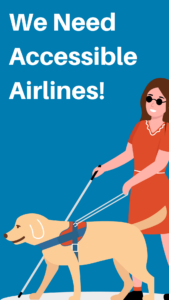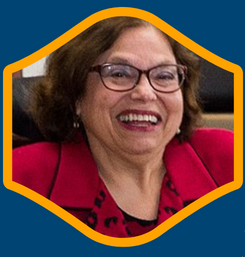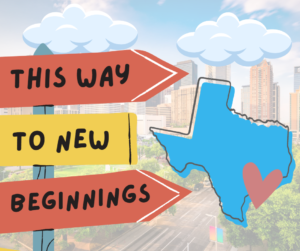
Healthcare Benefits
Easterseals recognizes that attracting and retaining an extraordinary workforce means that we need to be a great place to work. We’re dedicated to providing employees with a Total rewards package that is both comprehensive and competitive. We always strive to offer affordable healthcare benefit plan options that meet the changing needs of our workforce, including:
- 3 Medical Plan Options: Blue Care Network Health Blue Living HMO, BCBS PPO, HDHP PPO
- Dental Option: Delta Dental network
- Vision: Voluntary benefit offered through BCBS VSP Network
- Short and Long-Term Disability: Supplemental income program offered through UNUM
- Basic Life and Accidental Death Insurance: Offered through UNUM
- Optional Employee & Dependent Life Insurance: Offered through UNUM
- Healthcare Reimbursement Program: $2,600 Annual Maximum offered through Arcadia
- Employee Assistance Program: EAP services offered through Ulliance
Back to Comprehensive Benefits
About Us
- Get to Know Us
- Who We Are
- History
- Leadership
- Board of Directors
- Partners
- Crisis Services
- Community Impact Award
- Public Meetings
- More Info
Our blog
-
Autism Diagnosis in Women and Girls
Thursday, April 13, 2023, 2:47 PM
Hats off to TED Talks! They highlight people with disabilities pretty regularly there, and with this…
Read this Post Hats off to TED Talks! They highlight people with disabilities pretty regularly there, and with this being Autism Acceptance Month, they’re featuring an expert: a 20-year-old college student who was diagnosed as autistic in her teens.
Hats off to TED Talks! They highlight people with disabilities pretty regularly there, and with this being Autism Acceptance Month, they’re featuring an expert: a 20-year-old college student who was diagnosed as autistic in her teens.Now a sophomore at Austin College, Kate Kahle is an advocate for autism acceptance. From her TED Talk’s bio:
She hopes to promote autistic self-love as well as help neurotypical individuals see autism not as a tragedy or a disease, but rather for what it is, a lifelong, genetic developmental disability that is just another way of thinking and being in the world.
In her TED Talk, Kate tells her audience that she’d always had autistic traits, but it wasn’t until she developed severe anxiety during her freshman year in high school that her parents took her in for an evaluation. “I just thought I was weird,” she says with a shrug.
It was then that she was diagnosed with Autism Spectrum Disorder (ASD). “We were all shocked,” she says, going on to explain that symptoms common in women and girls with autism can differ greatly from symptoms boys and men experience.
“For every four boys diagnosed with autism, only one girl is diagnosed,” she says, adding that studies following children since birth show that the natural ratio of males to females with autism is closer to three to one.
But wait! Why am I telling you all this? Better to hear it from the expert! Kate Kahle outlines her thoughts on this discrepancy in her TED Talk, Why Autism is Often Missed in Women and Girls.
-
Traveling while Blind: What Needs to Change?
Thursday, April 6, 2023, 11:20 AM
How would an inclusive society differ from the one we’re living in now? Well, for one thing, an incl…
Read this Post How would an inclusive society differ from the one we’re living in now? Well, for one thing, an inclusive society would ensure people with disabilities have equitable access to four things other Americans may take for granted:
How would an inclusive society differ from the one we’re living in now? Well, for one thing, an inclusive society would ensure people with disabilities have equitable access to four things other Americans may take for granted:- Education
- Employment
- Health care
- Transportation
Transportation has been high on my list of concerns lately. I just booked a flight to head out East with my Seeing Eye dog, Luna, to attend a memorial service for an old friend of ours.
Flying got easier for us a dozen years ago after lawmakers made revisions to stop people from passing their monkeys, parrots, rodents and reptiles off as “service animals” in order to bring them on board. Guide dogs are well-behaved, expertly-trained and intelligent, but let’s face it – monkeys, parrots, rodents and reptiles can be pretty distracting to a dog who is trying to guide their companion safely to a seat on an airplane.
Those changes in 2011 define a service animal as “any dog that is individually trained to do work or perform tasks for the benefit of an individual with a disability.” Notice the specific word “dog” in that sentence? According to law, other species of animals (whether wild or domestic, trained or untrained) are no longer permitted to accompany individuals onto planes. Ever since that law went into effect in 2011, getting on and off planes with my Seeing Eye dog has been a breeze.
But now they’ve changed the rules again. Now I have to fill out a form with the Department of Transportation anytime I fly with my Seeing Eye dog. The form asks for information about me, my email address, phone number, etc. It also asks for our veterinarian’s name and phone number, the school where the dog was trained, how much the dog weighs, and whether or not the dog is healthy.
And oh, did I mention that the paper form is not accessible? My sighted husband has to help me fill out the form each time we fly, and I’m required to carry that form with me on board.
Each airline seems to have a different method of processing the form. Some have never seen the DOT form before, some say they also need an ID number for my dog, some ask for an identification card, some ask for certification of a rabies vaccination.
So while people who can see simply show their boarding pass and saunter down the jetway, I’m left to supply forms, certificates, and ID cards before my Seeing Eye dog is allowed to guide me onto the plane.
Once we board, we’re supposed to keep our dog within our footprint. This was pretty easy to do with my previous guide dogs (you command “sit!” – then you command “Down!” and once they’re laying down, you maneuver their bottom under the seat in front of you and have them place their head between your feet). Luna is a small black labrador retriever (she weighs about 50 pounds), so she can fit there pretty easily. But as the space between airplane seats get smaller and smaller, many guide dogs will not be able to fit there anymore.
I flew a lot more often before COVID, and back then, flight attendants would regularly offer me bulkhead seats to accommodate my Seeing Eye dog. But I’ve heard from other friends who are blind that the bulkhead is now considered “premium economy” and you have to pay extra to sit there.
It just doesn’t seem fair. I hope the advocates and staff participating at the Easterseals Policy and Partnership Forum in Washington, D.C., might talk to members of Congress and encourage them to take another look at the Air Carrier Access Act. We can build an inclusive future by making it easier for people who are blind or low vision to travel on airplanes with their service dogs!
-
In Celebration of Judy Heumann
Monday, March 13, 2023, 12:11 PM
Judy Heumann was known as the Mother of the Disability Rights Movement. It wasn’t just because of he…
Read this Post Judy Heumann was known as the Mother of the Disability Rights Movement. It wasn’t just because of her undeniable impact, having led the charge through grassroots demonstrations and organizing to pass significant legislation like the Americans with Disabilities Act. She owned that title because she nurtured the movement and the people within it. Her defiance against systemic ableism was a path of overwhelming obstacles. Many people who were on that path with her looked to Heumann to help navigate the unknown, and to bring clarity to a struggle that many were going through in silence. She lifted the movement through storytelling and being candid about her own experiences.
Judy Heumann was known as the Mother of the Disability Rights Movement. It wasn’t just because of her undeniable impact, having led the charge through grassroots demonstrations and organizing to pass significant legislation like the Americans with Disabilities Act. She owned that title because she nurtured the movement and the people within it. Her defiance against systemic ableism was a path of overwhelming obstacles. Many people who were on that path with her looked to Heumann to help navigate the unknown, and to bring clarity to a struggle that many were going through in silence. She lifted the movement through storytelling and being candid about her own experiences.Today, we celebrate Judy Heumann.
“We are the People Who Must Drive Change.”
The Impact of Storytelling
Making a Fuss
Because of Judy Heumann, the lives of millions of disabled people were changed for the better. Her legacy is written within the generations of disability advocates that will look to her example and ensure that her life’s work continues on.
Will you join them?
Learn More:
- Easterseals Facebook Live with Heumann: Demystifying Disability
- Watch Crip Camp (Netflix): Heumann stars in a documentary about a camp that inspired a movement.
- Being Heumann (GoodReads): Read Judy Heumann’s memoir.
- The Heumann Perspective Podcast
-
New Beginnings for a Long-Distance Relationship
Wednesday, February 8, 2023, 4:50 PM
Welcome to a new year! I hope everyone is having a nice start to 2023. New Year’s Day is alway…
Read this Post Welcome to a new year! I hope everyone is having a nice start to 2023. New Year’s Day is always my happiest day, because it feels like a clean slate and fills me with so much hope for the next 365 days.
Welcome to a new year! I hope everyone is having a nice start to 2023. New Year’s Day is always my happiest day, because it feels like a clean slate and fills me with so much hope for the next 365 days.This year is no exception. 2023 appears to be a year of new beginnings: after almost 3 years of long-distance dating with my boyfriend Juan, this is the year I’m moving to live with him in Texas!
In the spirit of Valentine’s Day, I thought it would be a good time to reflect on the last 3 years and share what I’ve learned. After trying long-distance relationships with other partners (and subsequently failing at it), I finally got it right this time.
And I learned a lot along the way.
I’m guessing some of my readers may find themselves in this same position, so I thought I’d share some of the things I’ve learned these past three years — the highs, the lows, and everything in between:
-
- It is not all sunshine and rainbows. I say this because I feel like rom-coms tend to glorify long-distance relationships, only showing us the best parts (the romantic date nights and airport reunions). While I do love the adrenaline rush when reunion day is upon us, it does get lonely sometimes. And the sooner you realize this, the better chances you have of navigating it.
- Recognize different communication styles, and learn when to compromise. Find middle ground. I’m more of a texter, while Juan definitely prefers phone calls. It’s a lot easier to send quick updates when you text, and I’m the sort who appreciates a “How’s your day?” or some sort of other message to quickly check in with each other while we’re living our separate lives. He’s gotten much better at this over the past three years. At the same time, we’ve been dating long enough now and I’m secure enough now to not always need that. I can do my own thing while he does his, and we don’t text as frequently as we used to.
- Learn to adapt under these different circumstances. The first time Juan met my sisters was actually over a FaceTime Video call. It was early 2021, we’d been together for about eight months, and it was peak COVID times so we weren’t able to travel. What to do? Arrange a time for all of us to chat over FaceTime! When he did meet my sisters in person, it was a little less awkward than it might have been otherwise. After all, they had spoken with him before.
- Juan’s preference for phone calls helped me get much better at open, honest, and sometimes difficult conversations. All that practice has helped me improve in-person conversations, too. When all you have is your phone to keep you two connected, you get pretty used to talking. And not all those conversations will be super fun and easy. All those phone conversations made it much easier to discuss things later on when we were together in person, and especially when I had my extended visit with him in Houston last April.
- Make sure to still incorporate date nights into your lives! At the start of 2022, Juan and I had a conversation about how we could prioritize our relationship a little bit better, and we agreed to do date night once a month. We did movie nights over FaceTime, played games on the Amazon Alexa, and sometimes watched TV shows. Other times, we just talked over dinner. It didn’t really matter what the date was, as long as we had one. And we didn’t miss a single month!
- Keep an open mind. I remember telling Juan a long time ago that if anyone was going to relocate, it would be him. Why? Because at the time I couldn’t imagine ever leaving my hometown. I also remember his response: “Okay, but with all due respect, you haven’t really seen Houston yet.” He was right. And I did visit (several times) and I loved it. Now I’ve decided I was wrong to want to stay in my hometown. Living in the same place my whole life doesn’t appeal to me the way it used to. Bottom line: If you enter a long-distance relationship, as scary as it may be to realize this, the end goal is that someone needs to eventually relocate. And that might be you.
- This brings me to my last point: I decided to move because I want to move, not just because he lives there. It took me a long time to make the definitive decision to relocate., I wanted to make sure that I would actually like where I lived, and I wasn’t moving my entire life for one person. So, my one-week visits to Houston turned into two weeks, and then a month-long visit in April 2022, just to be sure. And Juan was very patient with me while I processed everything, because he knows it’s a big step.
It’s been quite the journey, but I’m so proud of what we’ve learned and will continue to learn as we embark on this next chapter.
Welcome to 2023: the year of new beginnings!
-
-
Inaccessible Hospitality: “What An Incredible Conference…That I Had To Leave Early”
Thursday, December 15, 2022, 5:07 PMInaccessible Hospitality: “What An Incredible Conference…That I Had To Leave Early”
Thursday, December 15, 2022, 5:07 PM
There I was, lying on the pullout couch less than 2 feet above the floor, where my mother and my fri…
Read this Post There I was, lying on the pullout couch less than 2 feet above the floor, where my mother and my friend, Kathy, were strenuously bending over to pull up my pants, put on my shirt, preparing me for PRWeek.
There I was, lying on the pullout couch less than 2 feet above the floor, where my mother and my friend, Kathy, were strenuously bending over to pull up my pants, put on my shirt, preparing me for PRWeek.My mom is a trooper. At 62 years old, she’s made countless trips out of town with me – for work, physical therapy, and the occasional vacation – and she’s always been my “number one helper.” But, lifting and rolling my 225-pound body is more than a one mama job. We are lucky to have Kathy.
Getting in and out of bed, or in this case a pullout couch, could be easier. Unfortunately, all the hotels in Chicago we contacted have beds on “platforms,” meaning there is no space between the bottom of the bed and the floor. Why is that important? Well, there is this piece of equipment – a Hoyer lift – that can assist my helpers getting me in and out of bed. Quite frankly, it’s the only way I get out of bed.
Because we couldn’t find a hotel that simply just had space underneath their beds, where the legs of the Hoyer lift could slide under – lifting and dropping me above the bed – I was stuck on the pullout couch.
And, as I mentioned, the pullout couch is literally only 2 feet above the ground. Not. Easy.
My mom was already fighting a strained back, this inconvenience certainly didn’t help – our four-night trip to Chicago, which included two days of a PRWeek conference, a night out with my coworkers, capped off by my first trip to an improv comedy show. It was going to be a great trip!
But, I had to leave early. It was just too much.
I have a great deal of empathy for my caregivers. Knowing that my mom and Kathy were straining so hard literally just to roll me over to get me ready for the conference, we didn’t have the energy to continue for any time after the conference. No dinner with my coworkers. No comedy show.
It was a great conference. I believe the Easterseals + Change for Balance duo gave one of the better presentations, and I made a number of new friends, but the experience was overshadowed by the inaccessibility of the hotel, and the fact that I had to skip time with my colleagues to go home.
Look, I’m one of the lucky ones, and I’m well aware. I have a good paying job, which allows me to afford bringing Kathy along. I have a supportive mom, who will travel with me when I need help. But, even this crew of experienced travelers and healthcare workers couldn’t take it any longer – we headed home.
Even my mother, one of the toughest and “let’s get this done go-getters” made a comment: “It’s no wonder many people with disabilities choose not to travel. This is really tough.”
And that is the reality. Traveling is really tough. Hotels don’t design with full accessibility in mind and airlines are not accessible for people in wheelchairs. Thousands of people with disabilities choose not to risk the travel, whether for work or for vacation, and stay-at-home where it’s safe, where it’s accessible.
And that’s not right. That’s not fair. It’s not accessible. But it’s the reality.
So, what will we do? Do we stay quiet, stay-at-home, and on the occasional burst of courage take a work or personal trip?
I don’t think so. Let’s get loud. Let’s rally for more accessible hotels and airlines. Let’s rally for accessibility.
I’ll keep on sharing my stories and I’ll keep being “loud.” I hope you’ll keep following.
Let's Keep in Touch
Don't miss out on exciting news, helpful resources, and impactful stories delivered to your inbox each month.
Join TodayAbout Us
- Get to Know Us
- Who We Are
- History
- Leadership
- Board of Directors
- Partners
- Crisis Services
- Community Impact Award
- Public Meetings
- More Info


